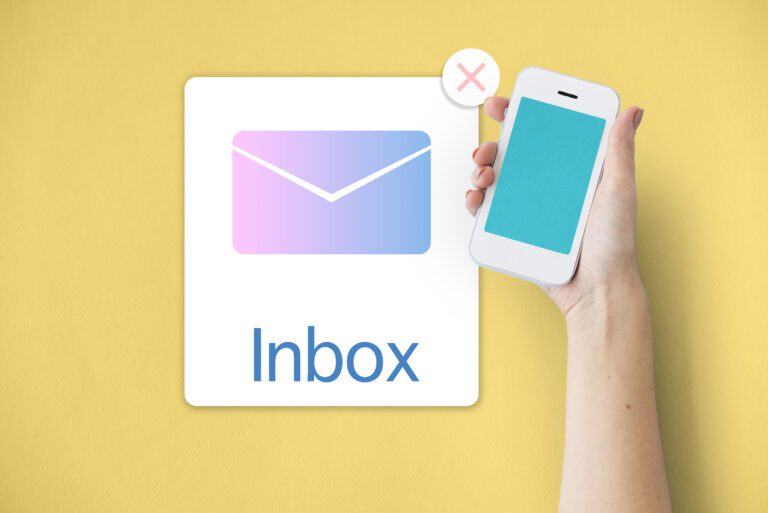Learn How to Calculate Lead Conversion Rate to Measure ROI

I hope you enjoy this blog post. If you want Hello Bar to grow your leads, click here.
Author:
Ryan Bettencourt
Published
July 30, 2024

There’s a common misconception that calculating lead conversion rates is an overly complex task best left to experts.
But this is far from the truth. You don’t need to be a data scientist or marketing guru to calculate a lead conversion rate.
With the right tools and a simple formula, you can easily determine the rate at which your leads convert and gain meaningful insights into your sales funnel.
We’ve compiled a quick guide below to help you start working out key lead conversion metrics and allocating your advertising spend effectively.
What Is Visitor Conversion?
Lead conversion occurs whenever a site visitor performs an action that turns them into a lead.
Such actions include a wide range of conversion goals that could positively impact your sales and marketing efforts, such as:
- Submitting information (such as a personal email address)
- Subscribing to a newsletter
- Making a purchase
- Downloading assets such as help guides, e-books, or white papers
- Engaging with the site regularly
- Creating an account
- Taking out a subscription
What Is a Lead Conversion Rate?
In short, a lead conversion rate is the percentage of visitors to a site or page who complete a specific action.
To improve your lead conversion process, you may need to supplement your analyses with other, more specific types of lead conversion rates.
The most common forms of lead conversion rates include:
1. Overall Conversion Rate
This figure assesses all site traffic and measures the success of a single conversion goal, such as the number of visitors creating accounts or making purchases.
2. Page Conversion Rate
This metric tells you how effectively a page converts visitors to new leads. It can be used to divert traffic to the highest converting sections of your site.
3. Channel Conversion Rate
Your channel conversion rate simply tells you how many leads are secured by a particular channel, such as Facebook Ads, Google search pages, or email campaigns.
It will help you determine which channels to improve or invest in to efficiently convert leads.
4. Keyword Conversion Rate
You’ll need to include high-intent keywords in all your organic and paid marketing content, so it’s well worth discovering which words and phrases generate the best lead conversion rates.
5. Campaign Conversion Rate
This metric tells you whether a specific ad campaign has done better than others. If one campaign does particularly well, you may wish to push more traffic in its direction. This can help increase the number of leads generated and maximize your sales effort.
What Is the Difference Between Marketing Qualified Leads (MQLs) and Sales Qualified Leads (SQLs)?
Depending on how long you’ve been in marketing, you may have heard the acronyms MQL and SQL thrown around occasionally.
An MQL is a lead who has engaged with your marketing materials or brand by taking a desired action, thus demonstrating their interest in your service.
These actions include signing up for a webinar, repeatedly visiting your site, or subscribing to your mailing list.
An SQL, on the other hand, is a customer who has moved further down the sales pipeline and is ready to interact with your business.
Typically, your sales team will research and vet an SQL before nurturing their interest.
SQL conversion rates are almost always higher than MQL conversion rates. That’s because they are identified as high-quality leads who are very interested in your goods and services.
You May Also Like
- How To Create a Lead Magnet: 15 Effective Tips and Examples
- What is Lead Nurturing: 11 Best Practices and Tactics (2024)
How Are Conversion Rates Used?
Calculating and monitoring conversion rates allows marketers and sales teams to improve their marketing and sales processes in several vital ways, including:
- Allocating resources more effectively
- Identifying high-performing content
- Creating a smoother sales funnel
- Scaling advertising spend appropriately
- Boosting organic traffic rates
- Nurture marketing qualified leads more effectively
- Increase your number of sales-qualified leads
- Improve calls to action (CTAs)
How to Calculate Your Lead Conversion Rate
Calculating your lead conversion rate is deceptively simple, but you’ll need to select an appropriate conversion rate formula.
Here are the three main ways to calculate conversion rate:
- Lead conversion rate = Total number of converted prospects / Total number of leads * 100
- Lead conversion rate = Total number of converted prospects / Total number of unique site visitors * 100
- Lead conversion rate = Total number of converted prospects / Total number of sessions * 100
All three formulae are perfectly valid, but you should select one that suits your conversion goal.
For example, if you define your leads converted as unique site visitors, you should opt for the following formula (calculation #2):
- Lead conversion rate = Total number of converted prospects / Total number of unique site visitors * 100
Example
Still confused? Here’s a simple example of how a marketer may wish to objectively measure lead conversion rate:
Imagine your e-commerce brand is selling handmade candles.
Your conversion goal is to encourage visitors to pass through your sales funnel and purchase their candles.
Your site had around 200,000 unique visitors in September, and you sold 1,000 candles.
Here’s how to work out your conversion rate:
Conversions (1,000) / Visitors (200,000) * 100 = 0.5%
You May Also Like
- 11 Benefits of Conversion Rate Optimization and Best Practices
- 9 Strategies on How to Generate Leads from Your Website
How to Implement Tracking on Your Site
Okay, so now that you’re familiar with calculating the number of leads generated. How can you find a quick and easy way to measure conversion rates across your sites and marketing channels?
Here are a few tips to enhance your analytics strategy, enhance your lead value, and encourage revenue growth:
1. Set up Tracking With Google Analytics
Google provides many granular options for measuring digital marketing success, including various key lead conversion metrics. Getting started involves a few quick and easy steps.
2. Include Various Conversion Tracking Events in Your Sales Funnel
When using most analytics tools, you’ll need to identify a tracking page or event, so try to identify your conversion goals early on.
3. Use Your Tracking Data
Your marketing team can use your conversion rates to develop strategies and create actionable insights for your brand.
Review your data at least once a month to determine what’s working well and what needs improvement in your marketing campaign.
What Makes a Good Lead Conversion Rate?
This question is tricky to answer, as it varies widely between industries.
As a general guide, the average landing page conversion rate across industries is 4.3%.
However, high-performing marketing teams can expect to achieve conversion rates of up to 18%.
FAQs
Q1: Why is it important to calculate lead conversion rate?
Calculating lead conversion rate is vital for multiple reasons:
- It helps you know the effectiveness of your marketing strategies.
- It provides a baseline for setting realistic goals and benchmarks.
- It helps you assess the conversion ROI for your marketing campaigns and sales initiatives.
Q2: How can I improve my lead conversion rate?
Several lead conversion strategies can help you increase the total number of leads converted to paying customers.
They include:
- Optimizing your website and landing pages for mobile.
- Leveraging social proof like testimonials and positive reviews.
- Using personalized content and offers.
- Creating engaging content suited for your target audience.
Q3: How do you calculate the lead conversion rate?
There are three formulas you can use to calculate the rate of converted leads:
- Total number of converted prospects / Total number of leads * 100
- Total number of converted prospects / Total number of unique site visitors * 100
- Total number of converted prospects / Total number of sessions * 100
Q4: What is the difference between lead conversion rate and customer conversion rate?
A lead conversion rate measures the percentage of potential customers (leads) who take a desired step and become actual customers. It primarily focuses on converting leads into customers.
Conversely, a customer conversion rate refers to the percentage of website visitors or prospective customers who convert into paying customers. It considers the broader picture of turning any type of prospect, whether a lead or casual website visitor, into a paying customer.
Q5: How often should I calculate my lead conversion rate?
We recommend calculating your lead conversion rate monthly or quarterly to track performance trends and make timely adjustments.
How Hello Bar Could Boost Your Conversion Rates
Are you struggling to achieve the desired conversion rates?
Hello Bar is here to transform your lead conversion strategy with proven expertise and innovation tools. Our platform stands out with compelling display popups, banners, and page takeovers designed to grab attention and drive action.
What sets us apart is our user-friendly interface combined with powerful targeting options that ensure your messages reach the right audience at the right time.
With Hello Bar, you can create personalized, high-converting CTAs with minimal effort. Our team of experts are committed to helping you achieve your conversion goals quickly and efficiently.





